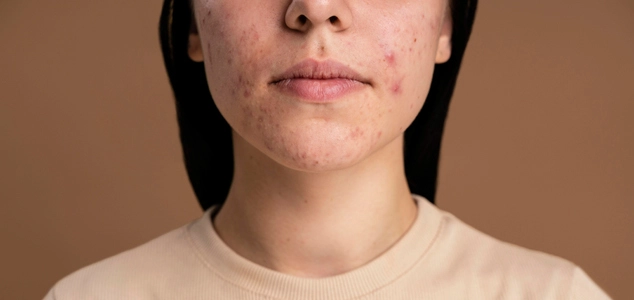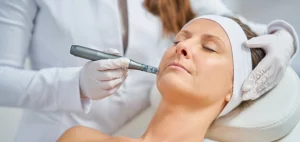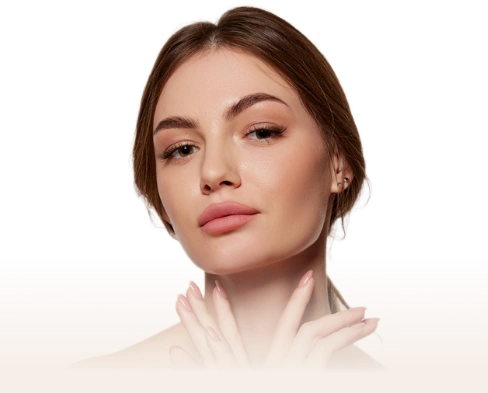Starting a new gentle skincare routine can sometimes lead to unexpected breakouts and blemishes – a phenomenon known as skin purging.
This can be confusing and discouraging in a world where appearance matters in all the ways. Today’s blog is all about what skin purging is, its causes, its symptoms, how long it lasts, and how to manage it effectively.
What is Skin Purging?
Skin purging refers to a temporary reaction that occurs when new skin care products, especially those with active ingredients like retinoids, AHAs, or BHAs, accelerate the skin’s natural exfoliation process, which can irritate already inflamed skin. This increased cell turnover brings underlying impurities to the surface, resulting in a breakout.
What is Acne Purging?
Acne purging specifically occurs due to the temporary worsening of acne symptoms due to the use of any skincare product. As new healthy cells are produced at a faster rate, clogged pores and impurities are pushed to the surface, causing breakouts that are typically short-lived compared to regular acne.
Skin Purging Symptoms
Recognizing skin purging symptoms is key to differentiating it from traditional breakout. Common symptoms include:
- Small, red bumps
- Increased whiteheads or blackheads
- Flaky, peeling skin
- Mild irritation or dryness
These symptoms usually appear in areas where you typically experience breakouts and tend to resolve faster than traditional acne.
What are the Causes of Purging Skin
Skin purges are mainly caused by active certain ingredients that enhance cellular turnover. Common active ingredients that can cause skin purging include:
- Retinoids (e.g., retinol purging, tretinoin)
- Alpha Hydroxy Acids (AHAs, such as glycolic acid)
- Beta Hydroxy Acids (BHAs)
- Chemical peels
Does Clindamycin Cause Purging?
Clindamycin, an antibiotic used to treat acne, can sometimes cause purging, although it’s less common than with retinoids and exfoliating acids. Clindamycin primarily targets acne-causing bacteria rather than accelerating cell turnover.
How To Overcome Skin Purging?
Managing skin purging requires patience and a thoughtful approach:
- Start Slowly: Introduce new products gradually to allow your skin to adjust.
- Moisturize: Keep your skin hydrated to minimize irritation.
- Avoid Harsh Products: Refrain from using additional exfoliants or irritating potent active ingredients during the purging phase.
- Be Consistent: Stick to your routine to avoid further inflammation, as stopping can reset the purging process.
What Does Skin Purging Look Like?
Skin purging often appears as a cluster of small, red pimples or whiteheads, typically in areas prone to breakouts. Unlike regular acne, purging blemishes clears up more quickly.
How To Treat Skin Purging?
Treating skin purging involves soothing properties and supporting your skin:
- Use Gentle Cleansers: Choose non-irritating, hydrating cleansers that have soothing ingredients like hyaluronic acid and ceramides.
- Apply Soothing Ingredients: Incorporate products with calming ingredients like aloe vera or chamomile that clog pores.
- Avoid Picking: Resist the urge to pop or pick at purging pimples to prevent scarring.
How Long Does Purging Skin Last?
The duration of skin purging can vary but typically lasts between four to six weeks. If symptoms persist beyond this period, it might indicate an adverse reaction or another skin barrier.
How Long Does a Pimple Last?
Individual pimples appear as the result of an inflammatory response that can last anywhere from a few days to a couple of weeks, depending on their type and severity. Proper skincare products can help expedite the healing process.
How Long Does Vitamin C Purging Last?
Vitamin C can cause a brief purging phase, although it’s less common compared to stronger actives like retinoids. This purging typically lasts about 2 to 4 weeks as your skin adjusts to the new product.
How To Tell If The Skin Is Purging?
To tell if your skin is purging, observe if breakouts occur shortly after introducing a new product, especially with an active ingredient like retinoids or acids. Purging typically happens in areas where you usually have breakouts and clears up faster than regular acne. If symptoms persist beyond four to six weeks, it may be an adverse reaction rather than purging.
What Are Some Tips for Purging?
Here are some practical tips to navigate the purging phase:
- Be Patient: Understand that purging is temporary and part of the process.
- Keep Your Routine Simple: Focus on gentle, hydrating products.
- Stay Consistent: Maintain your skincare routine to see long-term benefits.
- Consult a Dermatologist: If you’re unsure about your symptoms, seek professional advice.
Skin Purging vs Skin Irritation
| # | Skin Purging | Skin Irritation |
| Type of breakout | Skin purging results in temporary breakouts due to increased cell turnover from active ingredients, leading to faster-clearing blemishe. | Purging signifies effective product action, whereas irritation suggests the product may be unsuitable for your skin |
| Duration | Generally temporary, typically lasting 4-6 weeks as the skin adjusts to new products. | May persist beyond the initial application and could worsen with continued use of the irritant. |
| Treatment | Keep the skin hydrated and protected while allowing the purging process to complete. | Discontinue use of the irritant and use gentle, soothing skincare products to calm and heal the skin. |
Skin Purging vs Acne Breakouts
Skin purging is a temporary phase caused by active ingredients accelerating cell turnover, bringing underlying impurities to the surface quickly. It typically results in short-lived breakouts in areas where you usually have acne.
In contrast, an acne breakout occurs independently of new product use and can persist longer without proper treatment. Purging clears up faster, while regular acne requires ongoing management.
Why Skin Purging Happens?
Skin purging happens because active ingredients in skincare products, such as retinoids, AHAs, and BHAs, accelerate the skin’s cell turnover rate. This increased turnover pushes underlying impurities and blockages to the surface more quickly.
While initially causing breakouts, this process ultimately leads to clearer, healthier skin. It’s a temporary phase that indicates the product is effectively working to renew your skin.
Frequently Asked Questions
Q1: Why is my skin purging for so long?
Skin may purge the face for an extended period due to the depth of impurities within skin layers being addressed, or the potency of the product accelerating turnover or allergic reaction. Consulting a board-certified dermatologist, even if it’s an allergic reaction, can provide insights and adjustments if needed.
Q2: Can Salicylic Acid Cause Acne?
Salicylic acid typically doesn’t cause acne but may initially trigger breakouts as it clears pores and brings impurities to the surface, a process known as purging.
Q3: Can my skin clear up in 2 months?
Skin can show improvement in two months with a consistent and appropriate skin care regimen, but individual results vary based on skin type, condition severity, acne-fighting ingredients, and chosen treatments.
Q4: Can tretinoin skin purge the last 3 months?
Yes, the purging phase with tretinoin can last up to three months as it accelerates skin cell turnover, bringing underlying impurities to the surface before the skin improves and stabilizes.
Q5: Does Accutane clear skin in 2 months?
Accutane typically starts to clear skin within two months, but complete clearance often requires a full treatment course spanning several months to achieve lasting results.
Q6: Does benzoyl peroxide cause purging?
Benzoyl peroxide can cause initial purging as it clears pores and removes dead skin cells, but this phase is usually temporary and resolves within a few weeks as the skin adjusts to the treatment.
Q7: How long does the tretinoin purge last?
The purging phase with tretinoin typically lasts from a few weeks to a few months, depending on individual skin sensitivity and the strength of the formulation used.
Q8: How Can You Get Rid of Dead Skin Cells during Skin Purging?
You can effectively remove dead skin cells during skin purge face by using gentle exfoliants like chemical exfoliants (AHAs or BHAs) or gentle physical exfoliation with soft brushes or cloths, ensuring not to over-exfoliate, which can irritate the sensitive skin further.
– Disclaimer –
This blog is for informational & educational purposes only and does not intend to substitute any professional medical advice or consultation.
For any symptoms or medical advice, please consult with your physician, Or Book an appointment with our certified aestheticians at Syra Aesthetics.

About The Author
Dr. Syra Hanif M.D.
Board Certified Primary Care Physician
Dr. Hanif is the Director of Aesthetic Medicine. She is a board-certified physician in Aesthetic Medicine who specializes in using non-surgical alternatives in order to enhance one's appearance through Botox and fillers.
Read More











